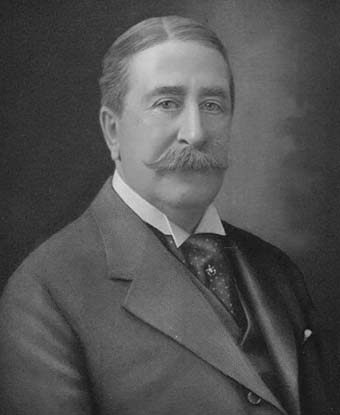Last updated: August 13, 2020
Person
Robert Henderson Robertson

Courtesy Shelburne Farms
Robert Henderson Robertson was an American architect who designed numerous houses, institutional buildings and churches. He was an pioneer in steel skyscraper design in New York City.
Robertson was born on April 29, 1849. His parents were Archibald Robertson, a merchant, and Elizabeth Henderson. Robertson’s father was a descendant of the McIntyre Iron Company in New York’s Adirondack region. Robertson graduated from Rutgers College in 1869. He began his architectural training in Philadelphia, in the office of Henry A. Sims. Soon after, he moved to New York and married Charlotte Markoe, daughter of a New York physician. By 1873, he worked in the office of Edward T. Potter, who was then designing the house built for Mark Twain in Hartford, Connecticut.
Robertson established the firm Potter & Robertson with William A. Potter, whom he had met while working in the office of Edward Potter. They dissolved their partnership in 1881, occasionally collaborating until Potter retired in 1902. Robertson was responsible for at least 56 substantial projects from 1881-1909, including large country houses and town houses, churches and institutional buildings, railroad stations (including Mott Haven Depot in the Bronx and Canandaigua in upstate New York), banks, and some of New York’s earliest skyscrapers. Heavy Romanesque buildings that relied on the use of heavy, rocky brownstone for articulation was among his trademark features in the 1880s.
Early skyscrapers designed by Robertson include the Lincoln Building (ca. 1885), the Corn Exchange Bank (1893-94), and the American Tract Society Building (1894-95). Though often published, his work was not critically admired, one reviewer noting, “none of these tall buildings contributes very distinctly to the solution of the specific problem of the tall building, and none can be called successful in its entirety. The architect’s power of design is shown in the parts, rather than in the whole, in the picturesque features in which his other work abounds.” Robertson’s most enduring legacy may be in the surviving buildings that were not noticed in his lifetime—the house and barns at Shelburne Farms (begun 1899) for Dr. William Seward Webb and Lila Vanderbilt, Santanoni (National Historic Landmark), the great camp designed for Robert Pruyn in the Adirondacks (1892-93), and the Coach House and Stables built for Frederick Vanderbilt in Hyde Park, New York.
Robertson was a musician, and president of the Mendelssohn Glee Club, for whom he designed a club house in Manhattan in 1891. He was elected a fellow of the American Institute of Architects in 1885.
